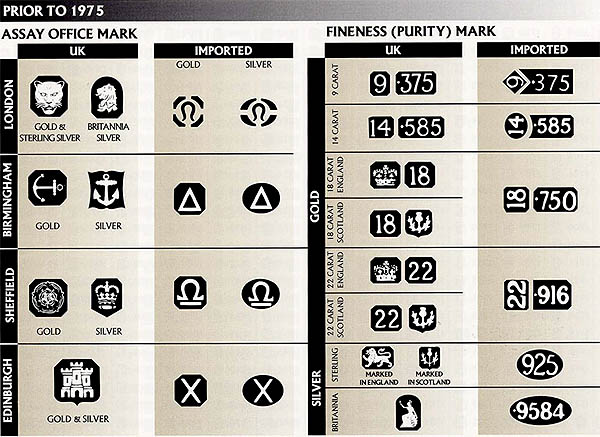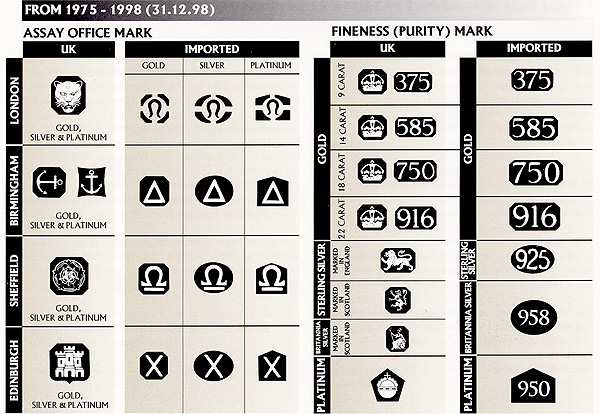|
|
How to date silver from fineness and assay
marks
|
|
|
Silver, gold, and
platinum have assay and fineness marks stamped on each
article. The Fineness mark is a representation of the
assayed purity of the metal. The Assay mark defines at which
office the metal was checked for its purity.
The Hallmarking Act
1973 changed on 1 January 1999 and allows articles of higher
and lower standards of fineness to be sold. This brings UK
law into line with European law. Consumers may now choose
from a much wider range of goods but to continue to benefit
from the same level of protection.
These marks are the
Assay Office Marks and the fineness marks. They are stamped
on Gold, Silver and Platinum products and represent the UK
office where the article was assayed.
|
|

Prior to 1975 no mark was given for platinum by the Assay Offices.
The fineness marks were stamped in two blocks except for Britannia
Silver which had a single stamp. On Gold the carat mark is always
stamped.

After 1975 the London Assay Office no longer used
the Britannia Silver mark. After 1975 all the four UK Assay Offices
included Gold, Silver and Platinum in their hallmark.
After 1975 the Fineness marks were simplified to
include a new mark for Platinum. Gold always carries a number
preceded by a crown. Silver is marked with a single symbol which is
either a lion or Britannia.
The imported fineness marks have also changed to
reflect the purity of the metal with the mark for carat removed. A
new purity mark for Platinum is also stamped on objects after 1975.
Search ?
|
|
|
gold and silver hallmarks
|
|

